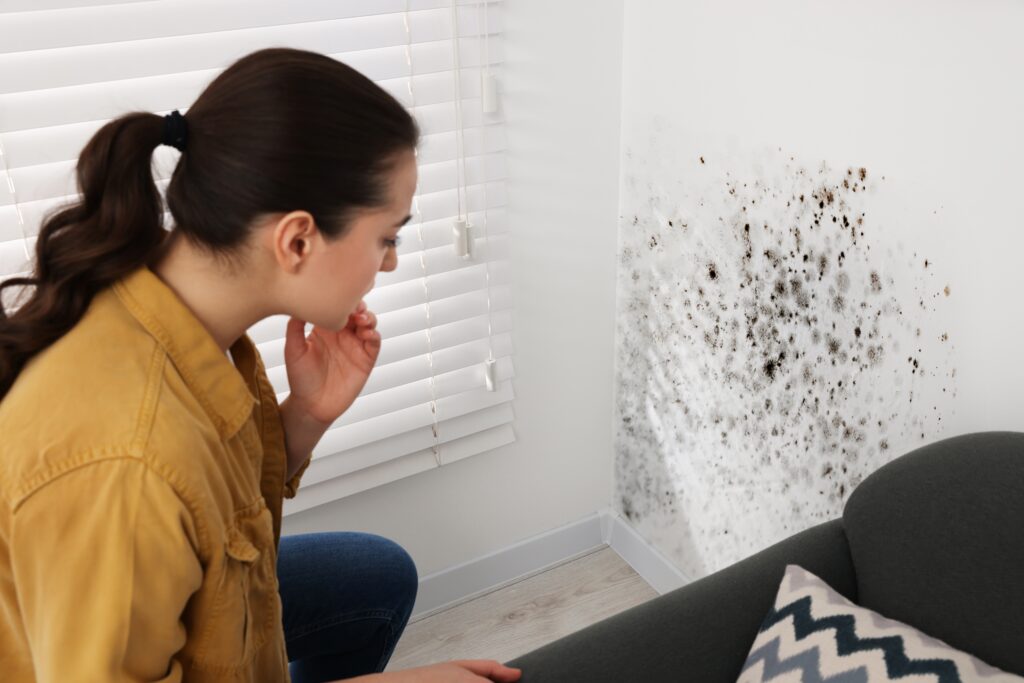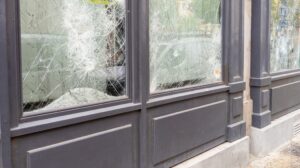Molds are organisms that break down animal matter and dead plants. Though most molds grow outdoors, they can travel inside by way of open windows and doors, air conditioning systems and on pets, clothing and shoes. Once inside your home, mold needs a moist food source, such as lint, ceiling tiles or wallpaper to grow. Mold thrives in damp, dark, and poorly ventilated areas. It can cause respiratory issues, damage building materials, and even lead to costly repairs that may not always be fully covered by insurance.
The Complications of Mold Exposure
Mold is not just unsightly—it’s a health hazard and a serious threat to your home’s structure. Young children, the elderly, those who suffer from allergies or asthma and those with prior respiratory conditions are particularly at risk for health complications from mold. Symptoms of mold sensitivity include eye irritation, nasal stuffiness, shortness of breath, wheezing and lung infections (in rare cases).
Whether you’re a homeowner or a renter, mold prevention should be part of your regular home maintenance routine. With this in mind, try these mold prevention strategies.
7 Tips for Mold Prevention
1. Control Indoor Humidity
Use a dehumidifier and/or air conditioner to reduce indoor moisture, especially during humid months of the year. Use a hygrometer to measure and keep humidity levels between 30%–50%.
2. Use Exhaust Fans
Always use exhaust fans in bathrooms, kitchens, and laundry rooms to help remove excess moisture. Run the exhaust fan for 20 minutes before and after showering, or consider using a humidistat-controlled fan that turns off when the moisture is ventilated from the area.
3. Fix Leaks and Cracks Promptly
Whether it’s a leaky roof, plumbing issue, or broken appliance, water intrusion is a leading cause of mold. Regularly inspect for signs of leaks and fix them immediately.
4. Clean and Maintain Gutters
Clogged gutters can cause water to pool and seep into your home’s foundation or roof. Clean them at least twice a year, especially after heavy storms.
5. Dry Wet Areas Quickly
If an area gets wet (like carpets after a spill or flood), dry it within 24–48 hours. Mold can start growing in as little as one day. Remove carpeting that cannot be dried out within 48 hours. If your carpet was contaminated by sewer water or a flood, it needs to be replaced.
6. Keep Air Flowing
Move furniture away from walls and open doors between rooms to increase air circulation. Stagnant air allows moisture to build up and mold to thrive. Empty the drip pans in your air conditioner, refrigerator and dehumidifier regularly to prevent water buildup.
7. Use Mold-Resistant Products
If you’re renovating or building, consider using mold-resistant drywall, insulation, and paints, especially in high-moisture areas.
Are You Covered?
Mold prevention is about protecting your health, your investment, and your peace of mind. Routine maintenance and smart home habits go a long way, and so does having the right insurance. Most standard homeowners policies do not cover mold damage unless it’s caused by a covered peril, like a burst pipe. However, some policies offer optional mold coverage endorsements, which may be worth exploring, especially if you live in a humid climate.
Need help reviewing your policy or curious about adding mold protection? We’re just a call or click away. For more home safety guidance and homeowners insurance solutions, contact us today.
























